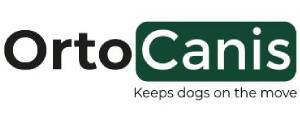A large percentage of our patients suffer from osteoarthritis problems, these being one of the most frequent consultations in our day to day. It is important to have a wide range of aids available for these cases in order to be able to adapt to the different health circumstances and environment of the animals as well as the possibilities and wishes of the owner.
Objectives:
- Pain management
- Improve range of joint movement
- Slow down the disease process
- Treat the compensatory changes in the musculoskeletal system
- Return to daily activities in the greatest possible extent
- Improve quality of life of the patient and customer.
"Treating osteoarthritis requires a holistic approach, not just with drugs or surgery" |
Pain management:
Drug therapy: Based primarily on NSAIDs or pure analgesics, which besides reducing pain also will stop the following vicious circle: Pain -> Immobility -> More musculoskeletal problems -> More pain.
Consider administering chondroprotectors and fatty acids.
Surgical treatment: It is clear that in some cases surgical treatment is necessary in order to optimize results.
Physical therapy treatment for pain reduction:
- TENS Electrostimulation
- Application of Cold-Heat
- Therapeutic Ultrasounds.
- Laser
- Massage
Weight control:
There are several diets on the market for weight loss as well as for helping to maintain an optimal weight for these diseases.
It is very important that the owner is informed about the extra burden the dog will be submitted to just for being a few kilograms overweight.
Concomitant diseases:
A patient with OA needs to be checked for concomitant diseases such as hypothyroidism, diabetes, hernias, etc.
Environment:
Minimize climbing stairs by using ramps.
Improve the sleeping area with cushioned viscoelastic beds or beds with thermal materials.
Protect the animal from the cold with lamps or thermal jackets.
Help the animal to move around with support harnesses that reduce the weight exerted on the weakened limbs.
Direct supports to the affected joints:
Thermal braces with ceramic particles that reflect the animal’s own heat and return it as infrared radiation, improving circulation and muscle performance.
Aids that reduce joint instability when the cause is OA, as is the case with hip or elbow dysplasia and torn cruciate ligaments.
Sample rehabilitation plan for OA. |
|---|
|
1-Warm up:(10 minutes) Promotes blood flow, collagen and tissue flexibility and reduces pain, muscle spasms and joint stiffness. This can be achieved through massage, applying heat and ultrasounds. It is contraindicated in case of swelling and joint inflammation. |
|
2-TENS (Electrostimulation): This can be used to reduce pain and facilitate the support and load on the joints. It is contraindicated in cardiomyopathies and uncompensated nephropathies. |
|
3-Low level cardiovascular exercises: Controlled walks on the leash, walks on the treadmill, hydrotherapy, cavaletti, etc. The amount of time not moving should be minimal during the walks. As the animal’s physical condition improves, difficulty can be added to the walk with hills, stairs or obstacles (20 minutes) |
|
4-Cool down: (10 minutes) Decrease the speed of the walk, stretches and massage. |
|
5- Apply cold on the surface: If necessary, you can apply cold to reduce joint inflammation after the walk. |
Luz González and Laura Pérez. Ortocanis.com Veterinarians
Extracted from the book “Fisioterapia y Rehabilitación Veterinaria” by Gemma del Pueyo Montesinos


